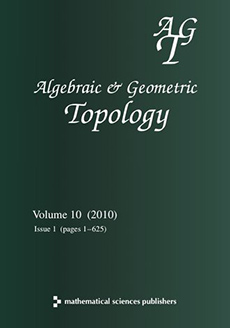Abstract
We determine the algebraic structure underlying the geometric complex associated to a link in Bar-Natan’s geometric formalism of Khovanov’s link homology theory (). We find an isomorphism of complexes which reduces the complex to one in a simpler category. This reduction enables us to specify exactly the amount of information held within the geometric complex and thus state precisely its universality properties for link homology theories. We also determine its strength as a link invariant relative to the different topological quantum field theories (TQFTs) used to create link homology. We identify the most general (universal) TQFT that can be used to create link homology and find that it is “smaller” than the TQFT previously reported by Khovanov as the universal link homology theory. We give a new method of extracting all other link homology theories (including Khovanov’s universal TQFT) directly from the universal geometric complex, along with new homology theories that hold a controlled amount of information. We achieve these goals by making a classification of surfaces (with boundaries) modulo the 4TU/S/T relations, a process involving the introduction of genus generating operators. These operators enable us to explore the relation between the geometric complex and its algebraic structure.
Citation
Gad Naot. "The universal Khovanov link homology theory." Algebr. Geom. Topol. 6 (4) 1863 - 1892, 2006. https://doi.org/10.2140/agt.2006.6.1863
Information





